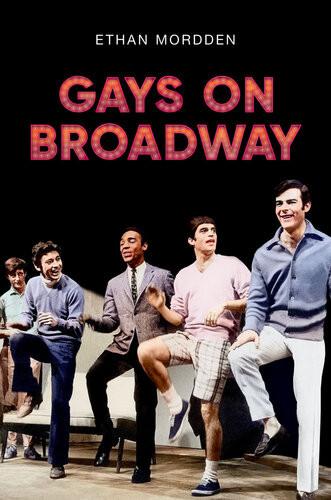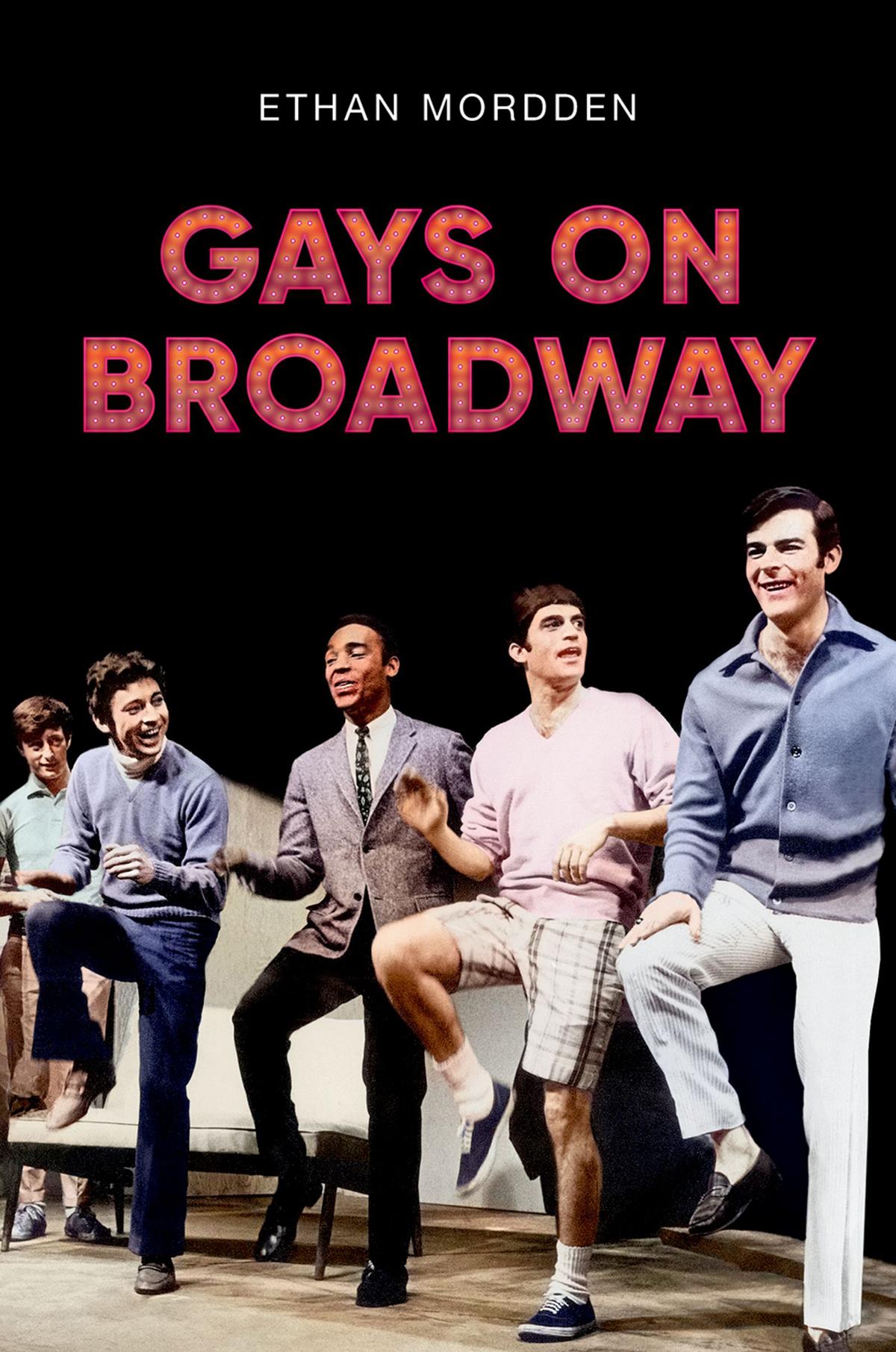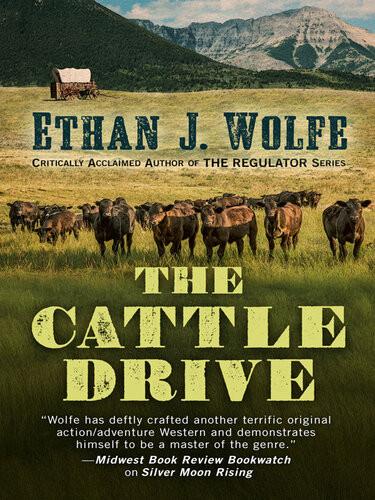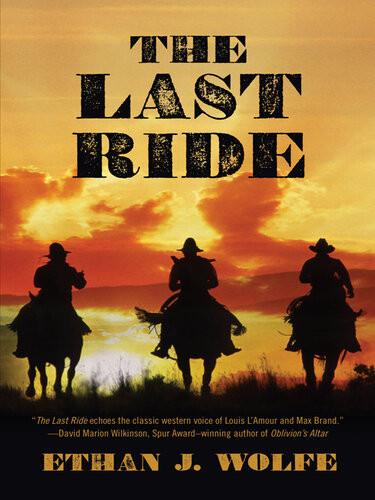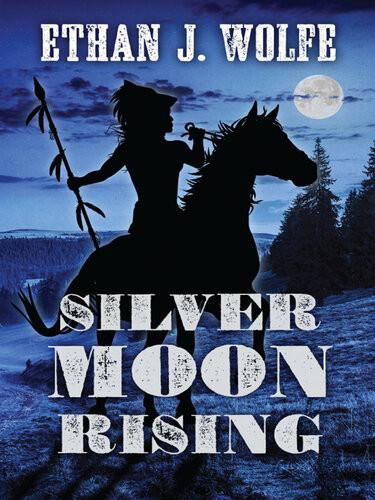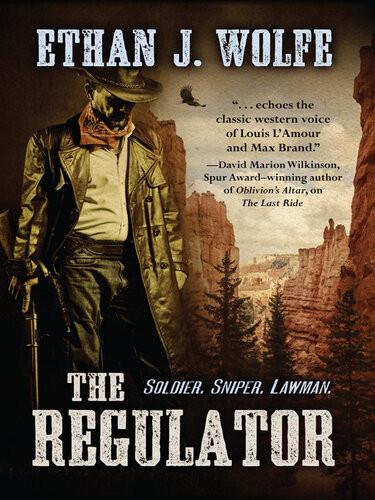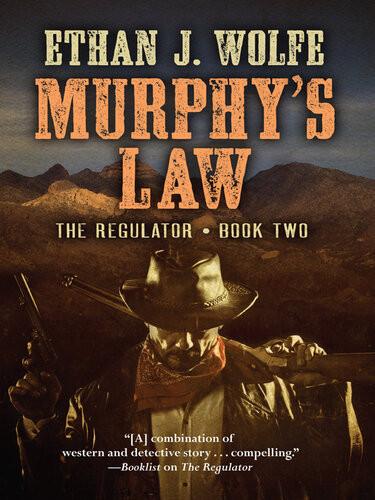Gays on Broadway
ETHAN MORDDEN
Oxford University Press is a department of the University of Oxford. It furthers the University’s objective of excellence in research, scholarship, and education by publishing worldwide. Oxford is a registered trade mark of Oxford University Press in the UK and certain other countries.
Published in the United States of America by Oxford University Press 198 Madison Avenue, New York, NY 10016, United States of America.
© Ethan Mordden 2023
All rights reserved. No part of this publication may be reproduced, stored in a retrieval system, or transmitted, in any form or by any means, without the prior permission in writing of Oxford University Press, or as expressly permitted by law, by license, or under terms agreed with the appropriate reproduction rights organization. Inquiries concerning reproduction outside the scope of the above should be sent to the Rights Department, Oxford University Press, at the address above.
You must not circulate this work in any other form and you must impose this same condition on any acquirer.
Library of Congress Cataloging-in-Publication Data
Names: Mordden, Ethan, 1947- author.
Title: Gays on Broadway / Ethan Mordden.
Description: New York : Oxford University Press, 2023. | Includes bibliographical references and index.
Identifiers: LCCN 2022040741 (print) | LCCN 2022040742 (ebook) | ISBN 9780190063108 (hardback) | ISBN 9780190063115 | ISBN 9780190063122 (epub) | ISBN 9780190063139
Subjects: LCSH: Gay theater—United States—History. | American drama—20th century—History and criticism. | Gay men in literature. | Theater—New York (State)—New York—History—20th century.
Classification: LCC PN2270. G39 M67 2023 (print) | LCC PN2270. G39 (ebook) | DDC 792.086/640973—dc23/eng/20221121
LC record available at https://lccn.loc.gov/2022040741
LC ebook record available at https://lccn.loc.gov/2022040742
DOI: 10.1093/oso/9780190063108.001.0001
Portions of the section on Companyin Chapter Seven first appeared in the author’s blog, Cultural Advantages, on August 22, 2015.
Illustrations courtesy of the Billy Rose Theatre Collection, the New York Public Library For the Performing Arts, Astor, Lennox, and Tilden Foundations; and private collections.
Contents
INTRODUCTION: You MussstCome Over!
1. THE 1910s AND 1920s: Shadowland
2. THE 1930s: The Gays Who Came To Dinner
3. THE 1940s: The Poet Of Big Characters
4. THE 1950s: The Body Beautiful
5. THE 1960s: You Shouldn’t WearHeels When You Do Chin-Ups
6. THE 1970s: Did You Go To Oberlin?
7. THE 1980s: Well, Yes, Actually, Yes, I Have
8. THE 1990s AND 2000s: They’re Taking Over
9. THE PRESENT: Mr. Albee Never Changes His Mind
ForFurtherReading Index
Introduction
You Mussst Come Over!
This is a chronological review of both the plays and the people that brought the world of homosexuals, bisexuals, transsexuals, metrosexuals, and the sexually fluid to the American stage.
The plays—which take in a few foreign imports—treat strong gay content (e.g., TheBoysIntheBandor TheKillingOfSisterGeorge), or minor gay content (SeasonIntheSun, TheNervousSet), or even a phrase in passing (as in New Faces Of 1956’s joke about Rome’s Piazza Di Spagna, so niche that perhaps fifty people got it during the show’s six-month run).
I have included as well plays that portray gay through dog whistles (such as Bell, Book and Candle, in which the witches are really gay people) and even plays whose sense of parody or outright camp (such as Little Mary Sunshine or Johnny Guitar) are at least gay-adjacent.
As for the people in the book—writers, actors, creatives—I have included profiles of some who, though gay, had little interest in portraying gay lives—Edward Albee, for example, even as his influence not as a writer about gay but rather as a writerwhoisgay was extremely broad, so conclusive that he takes pride of place at the end of this volume. These so-to-say pre-Stonewall eminences— actor-manager Eva Le Gallienne is another one—are as much a part of the chronicle as such overtly gay-in-content writers as Terrence McNally.
Consider the case of lyricist-librettist John Latouche, whose work ranged from black folklore (in Cabin In theSky) to Greek myth (in TheGoldenApple) to silent-era Hollywood (in TheVamp), all “sexy” topics that never even glance at gay culture yet resound with the colorful doings that gays in particular respond to. One could argue
that Latouche’s chromosomes enabled his very agile imagination and love of the picturesque.
I make no attempt to include every relevant reference. Rather, I have tried to cover every type of gay activity, even if with but one or two examples. There isn’t room for it all. Readers who feel important titles or people have been slighted should consider writing their own books, as the field is still wide open and could use some company. Live and let live.
1
The 1910s and 1920s Shadowland
Like many great events, it all starts with drag queens. This may seem an implausible concept for early in the twentieth century, given the antagonism that gay men and women * have faced in their fight for visibility and civil rights. However, the many single-gender private schools of the day and their robust dramatic societies habituated Americans to men playing women and women playing men. Further, there was a popular genre of plays specifically calling for a male character forced against his will to disguise himself as a woman. There was even a classic in this line, a British comedy constantly performed here especially by amateur groups, Brandon Thomas’ Charley’sAunt(first seen on Broadway in 1893), which proved hardy enough to turn into a hit musical, Frank Loesser’s Where’s Charley? (1948), starring Ray Bolger and running for two years.
No, it isn’t quite Drag Queen Planet. Still, that same “man pretends to be a woman despite himself” premise was the standard plot for America’s most prominent (of several) drag actor—or, as they were styled then, “female impersonator”: Julian Eltinge. His form was musical comedy (or plays with a handful of songs, a common format around 1900), and his approach to drag delineated the impersonation so deftly in both grooming and behavior that some in the audience took him for a biological woman and were startled when, in his curtain call in drag, he would tear off his wig with a grin.
Eltinge was equally persuasive when playing male characters as well, which is what made him so successful: his shtick, really, was
how totally he transformed from man to woman and back and forth thus all evening, because his men were virile and his women tender. In Charley’s Aunt, the joke is that the female impersonation is deliberately grotesque yet fools the other characters completely.
But Julian Eltinge emphasized the illusion, even when he sang. Starting in vaudeville, he reached Broadway in 1904, in a British import, Mr . WixOfWickham. This was a major production, put on by Edward E. Rice, one of the founding fathers of the American musical, as composer and impresario. In fact, Rice cowrote and produced the first American show with a full-scale and largely integrated score, Evangeline(1874).†
Eltinge always moved in grand company. He was close with George M. Cohan and other Broadway bigwigs, and A. H. Woods, Eltinge’s manager (the old term for “producer,” though “agent” was sometimes part of the job as well), was one of the powers of the theatre industry. The original of the brash hondler who calls everyone “sweetheart,” Woods actually built a playhouse in his star’s honor, the Eltinge Forty-Second Street Theatre, in 1912.‡ And after his years as a boldface stage name, Eltinge moved to California to go Hollywood, starring in silent films in his usual gender-bending approach and building as Villa Capistrano a mad showplace on Baxter Street in Silver Lake. A cross between Spanish Mission and a fortress, it was four stories high and perched on a hill with a CinemaScope view of the lake. Here was a very tower of fame, though the surrounding greenery made the structure nearly invisible from the street.
So Eltinge was big, supposedly the highest-paid actor of his generation—yes, a drag queen. True, his public profile accented cigars, boxing, and such. And his offstage photos revealed a chunky, amiable, middle-class guy, perhaps an insurance broker: nothing like the slithery, sarcastic performers famed in drag today. Open Daniel Blum’s Great Stars Of the American Stage (1952), devoting two pages to each subject, with a kind of yearbook precis and stills in and out of costume, and there’s Eltinge rowing a canoe, flanked on either side by beauties of the day in elaborate costume—belle
epoque, schoolgirl, pour le sport, matronly . . . and they’re all Eltinge, too! (The shot was made through double exposure, the CGI of its time.)
Ironically, none of Eltinge’s four Broadway shows ran very long on The Street, though they did fine business on the road, making Eltinge a truly national celebrity. After Mr . WixOfWickhamcame The Fascinating Widow (1911), The Crinoline Girl (1914), and Cousin Lucy(1915). The major title in the set, the Widow, found Eltinge as two-fisted Hal Blake, forced to masquerade as a certain Mrs. Monte in order to expose a Society Cad and win the heroine. The score favored Eltinge’s drag ID, complete with entrance number (“The Fascinating Widow”), a beach ditty with the chorus girls in swimming togs (“Don’t Take Your Beau To the Seashore”), and the de rigueur rhythm piece (“The Rag Time College Girl”), among other numbers. Note, again, a collaboration with a theatre hot shot: though the music was by the unimportant Frederick W. Mills, the book and lyrics were the work of Otto Hauerbach (later Harbach), mentor of Oscar Hammerstein II and a major writing partner of Jerome Kern.
Now for the $64,000 question: was Eltinge gay? Of course, there were rumors, based for all we know on nothing—but Eltinge was a lifelong bachelor, then as now a curiosity. Straight men tend to marry.
Meanwhile, there was an openly gay drag artist, one who—unlike Eltinge—reveled in the campy rebellion of the male who is a queen and wants the world to know: Bert Savoy. Also unlike Eltinge, Savoy did not fit easily into story shows, having too much distracting gay baggage for the boy-meets-girl tales of the day. Rather, Savoy specialized in the “sophisticated” Broadway revue—the spectacular Miss 1917 (coproduced by Florenz Ziegfeld) and the modest but chichi GreenwichVillageFollies, in 1918, 1920, and 1922.
These variety shows allowed Savoy to work within a selfcontained act. Using a “feeder”—in this case “straight man” Jay Brennan—Savoy would flounce about in fifi getups, so drag in the modern “flaming” sense that if gay hadn’t already existed, Bert Savoy would have had to invent it.
Savoy had two catchphrases that gained a national presence, quoted even by folks who had no idea who Bert Savoy was or why anyone would address someone as “Dearie.” One was “You don’t know the half of it, dearie, you don’t know the half of it.” The words moved into popular song in George and Ira Gershwin’s Lady, Be Good!, in “The ‘Half Of It, Dearie’ Blues,” conjured up for Fred Astaire with rampageous tap breaks between the lines.
Savoy’s other catchphrase achieved even larger circulation, as it offered Mae West the matrix for her famous “Come up and see me.” The original version, Bert Savoy’s, was “You must come over!,” pronounced with a louche lilt of delight, hand on hip and eyes afire with mischief: “You mussstcome over!” This line, too, found its way into song, as Lewis E. Gensler, B. G. De Sylva, and Ira Gershwin again seized on the fad in a semi-hit musical of 1925, CaptainJinks, with “You Must Come Over Blues.”
Central to Savoy’s act was his recounting of the adventures of his forever unseen gal pal Margie. A typical episode might take off with a blatant double entendre, thus:
SAVOY: I’ve a new recipe for homemade candy. Oh, it’s all the rage— all-daysuckers! You mussstcome over!
BRENNAN: You were telling me about your friend Margie.
SAVOY: Oh, that Margie! Always some new calamity! Why, just last week she and her beau went to the movies to spark in the balcony. All the kids do now, you know. Oh, they all go sparking —the peppy ones. Yes, but even before Margie and her cavalier take their seats, he gets into a conversation with a handsome usher, and my dear he simply cannot tear himself away! Oh, he’s so unusual!
As the public laughs, Savoy moves downstage, Surveys the House, and sasses out, “You mussstcome over!”
People who were around back then always said, in recalling men and women who were obviously gay, “You never spoke about it.”
Really never? Even with all the information coming from the popular arts? The bohemian life in Greenwich Village—a mixture of artists,
political agitators, gays, prostitutes, and nonconformists of all kinds, not to mention a conservative Italian-American community—was a standing joke among New Yorkers. Once again, there was a song about it, in Jerome Kern’s Oh,Lady!Lady!!(1918), to lyrics by P. G. Wodehouse, “[For there’s something in the air of little] Greenwich Village.” The second verse tells of “my favorite aunt Matilda,” who left Oshkosh at the age of eighty-three to try life among the Village savages:
She learned the ukalele [sic], She breakfasted at Polly’s, And what is worse, She wrote free verse, And now she’s in the Follies!
Note that Polly’s, on MacDougal Street, was under police surveillance for its lawless habitués, both sex workers and gays. Wodehouse might have been referencing the restaurant simply as a Village landmark—but it had a Reputation. Just to mention it was to disseminate information about the thing You Never Spoke About. Cole Porter, too, flirted with taboo, one year later, in Hitchy Koo 1919, in “My Cozy Little Corner In the Ritz,” “’cause I like to watch the kings and let the queens see me,”—and he didn’t mean the royal kind, as he was always sneaking Allusions into his lyrics. Ironically, one of the most potent such Porterisms is by Noël Coward, who wrote his own wicked verses to Porter’s “Let’s Do It (Let’s Fall In Love).” There we learn that “Belgians and Greeks do it” and then “Nice young men who sell antiques do it.” And Porter sang his version in his very successful Las Vegas cabaret turn, at the Desert Inn in 1955, before a mass audience, not a niche of sophisticates.
Not everyone clued into gay style was of the clan or clan-friendly, though. A New York tabloid of the 1920s and 1930s, Broadway Brevities, devoted to the doings of the famed and reckless, covered as well “pansies” and “dykes,” emphasizing the popular stereotypes. Sample headline: fag balls exposed. Sample cartoon: a haughty, lipsticked gentleman enters the ladies’ room as an aghast woman asks, “Oh, isn’t there some mistake?” “Sez you,” the man retorts.
Sample newsbreak: Noël Coward supposedly has “discovered” a “lad” dancing “in a Bombay honky tonk” and “has kept him ever since.”
Broadway Brevitieswas available on newsstands, its flashy covers right next to New York’s dailies. Even more widely known was Anita Loos’ Gentlemen Prefer Blondes, a satirical novella on the lovely blond gold digger Lorelei Lee and her worldly sidekick, Dorothy. When Lorelei encounters a French father and son who are always kissing each other (in the Gallic manner, bien sûr), Dorothy says “people would think that [they] painted batiks.” Further, one of the heroine’s wealthy boy friends has a sister who “always likes to spend every evening in the garage taking their Ford farm truck apart and putting it back together again.”
At the same time, gay characters were cropping up in serious drama in the late 1920s, so they were not only speaking about it but portraying it. In Machinal(1928), expressionism based loosely on the decade’s infamous Ruth Snyder–Judd Gray murder case that ended with their execution, playwright Sophie Treadwell doesn’t tiptoe about: in a scene in a bar, she describes two minor players, billed as “a Man” and “a Boy,” as, respectively, “a middle-aged fairy” and “young, untouched.” The Man invites the Boy to his home to show him “a first edition of Verlaine that will simply make your mouth water.”
More prominently, Eugene O’Neill’s nine-act Strange Interlude (1928), which took so long to play because characters interspersed into their dialogue the content of their thoughts, included a closeted man in its storyline, one Charles Marsden. He’s a major principal, with both the play’s opening and closing lines, and while he neither does nor says (nor even “thinks” aloud) anything overtly gay, O’Neill tells us he has “an indefinable feminine quality about him,” with “long, fragile hands” and “a quiet charm.”
Well, that’s a step up from a middle-aged fairy. But the key title in this era is TheCaptive (1926). A French play, Édouard Bourdet’s La Prisonnière, it tells of a young woman who defies convention in her liaison with another woman. But is she truly a captive or a willing partner?
The American production, staged by Gilbert Miller in the translation of Arthur Hornblow Jr., respected the original rather than adapt it, though the Parisian setting and the French names were a tad exotic and though Bourdet’s form was the old-fashioned “wellmade” work in three acts, with exposition, complication, and disposition. To wit:
ACT ONE: Irène is evasive in her reluctance to marry her sweetheart.
ACT TWO: That sweetheart’s old friend reveals that Irène is intimately involved with his wife in “the kingdom of shadows,” from which there is no escape. “One can never overtake them!” he cries. And this wife is the ultimate femme fatale, with charm that turns the world upside down in a prison of love. “[I] hate her,” he says. “I worship her.”
Now, the well-made play habitually climaxes with the so-called scène àfaire, the “obligatory scene” in which the play confronts its devils. The prodigal son shows up when his lover is marrying his brother. The villain unknowingly sips from the poisoned chalice. The treasure map is found: X marks the spot.
So, Bourdet has to produce Irène’s amour, so we can see for ourselves this fascinating jailer of souls:
ACT THREE: The lesbian captor appears. She is insolent, sly, sure of herself. She is the Queen of Shadows!
No, wait. That’s too obvious. Instead:
ACT THREE: She will be modest, attractive, pleasant, and she will give Irène up.
But Bourdet cleverly omits the scène à faire altogether. The captor never appears! And really, could any actress encompass the allure and terror that Bourdet had built up—Jezebel, Circe, and Mata Hari in one vessel? “She dominates three acts,” John Mason Brown wrote in Theatre Artsmagazine, “a hundred times more vividly than if she had ever appeared.”
And who knows if this phantom really is a captor? Because just as matters seem to smooth themselves out, Irène ditches her fiancé after all and leaves to rejoin her lesbian lover. Is Irène truly the prisoner . . . or a willing participant in the imprisonment? Even . . . a captor herself?
TheCaptive was a classy production, not an indie affair but Big Broadway. Gilbert Miller was the son of Henry Miller, a major actormanager who erected his own playhouse, rebuilt as the Stephen Sondheim Theatre. And Junior opened The Captive at the Empire, Broadway’s most prestigious house, built by Broadway’s most prestigious producer, Charles Frohman.§ Further, The Captive’s cast was very presentable, led by Helen Menken as Irène and Basil Rathbone as her fiancé. In all, this was an imposing attraction, not to be mistaken for an exploitation piece like the “sex comedies” that had become popular since the late 1910s such as The Woman In RoomThirteen, UpInMabel’sRoom, SheWalkedInHerSleep, even the salacious-sounding TwinBeds.
Nevertheless, an openly lesbian character was dangerous stuff in 1926, for the authorities had an extra irritation to deal with in the person of Mae West, actress, playwright, director, and arguably one of the most influential figures in opening the culture to information that fascists of all kinds want kept secret. Remember, as Auntie Mame says, “Knowledge is power.”
West was promulgating the avatar of the New Woman: independent, entrepreneurial, and sexual. West’s characters—all versions of West herself were living autonomously rather than within traditional social constructions. In other words, she was no man’s woman. She knew this would outrage the authorities; she meant to, in fact.
Moreover, she habitually concocted stories that combined the outlaw world with Society, showing grandees getting involved with crooks. This threatened to destabilize Americans’ respect for the elite, especially those whores the professional politicians.
No wonder West insisted on writing her own lines when she got to Hollywood, in 1932: she couldn’t trust anyone else to endow the
West Woman with the appropriate worldview. Try this snippet of Paramount’s Goin’ToTown(1935), in which West tries to crash High Socì:
MAE: For a long time, I was ashamed of the way I lived.
MAN: You mean to say you reformed?
MAE: No, I got over bein’ ashamed.
But we’re here to discuss West’s Broadway work; oddly, her twenties plays, credited to “Jane Mast,” are just this side of barfulous, because she hasn’t yet developed the persona she was to immortalize in her talkies, somewhat modeled on Bert Savoy again, his “You mussst come over!” turned into West’s “Come up and see me.” Still, these Mast concoctions are historical, for West placed the gay male, his campy lines, and even a drag ball right on stage for the first time.
Sex(1926), which West appeared in as well as wrote, dealt with a more or less goodhearted prostitute mixed up with fancy folk, one Margie LaMont (another reference to Bert Savoy’s routine). Sexran a year despite the critics’ irritation (“a nasty red-light district show” should have been a pull quote), partly because of the title’s promise of sinful doings but mainly because the public was fascinated with West’s unique performing style, with the cockeyed strut, the hand on hip, and the murmured umms and oohs, the pillow talk of the Magdalene.
West didn’t appear in her more controversial shows, The Drag (1927) and The Pleasure Man (1928), but there the show-off parts were gay men, indulging in minty repartee. One of the parish met “a handsome brute of a taxi driver” and “he’s been following me ever since.” It was the BroadwayBrevitiescome to life, the real thing.
The Drag folded on its tryout, as West was strongly discouraged from bringing it in. The District Attorney for New York County, a transplanted Texan named Joab H. Banton, was a crusader, against real crime but also against tolerance of what the Brevities liked to call “the Third Sex.” With the sympathy of many city fathers behind him, Banton decided to close some “offending” Broadway shows and
prosecute those involved, including the actors. Interestingly, he waited till the Mayor, James J. Walker, was out of town.
Banton didn’t have to wait long, as Walker was notorious for his countless vacations. Nevertheless, for all the corruption of his administration, Walker was a live-and-let-live kind of guy, and he had many friends in what was then called “the show business.” So Banton was not only a bigot, but a sneak.
And with Walker off at the beach somewhere during a cold February in 1927, Banton struck. It was not unprecedented, be it said, for city officials to persecute the stage. Earlier in the 1920s, they closed and indicted participants in the production of Sholem Asch’s The God Of Vengeance (1922), an off-Broadway show that had moved to The Street. Written in Yiddish, the play had swept the Western world because of its melodramatic blending of sex and religion, personified in its high-strung protagonist** who is both Jewish zealot and bordello keeper.
Shocking for the day, the action is set for two of its three acts in the brothel, and Asch even includes a lesbian scene, quite delicately written, in which one of the prostitutes befriends the brothel keeper’s daughter. It was perhaps this notion that sex workers might have tender and even spiritual instincts that offended the professional Grievance Committee that is always with us in one form or another. Those aggrieved even counted a conservative Jewish influencer, a prominent rabbi who was enraged by the depiction of his co-religionists working in a whorehouse.
So The God Of Vengeance was shuttered by force, right in the middle of a successful run. Yet this example of how the state can decide what theatregoers can and cannot see did not startle the theatregoing community as much as one might think, for the play was an exotic—European in origin, composed (though translated, by Isaac Goldberg) in a language spoken only by obscure immigrants, and played by actors no one had ever heard of. This even though Rudolph Schildkraut, the show’s protagonist and director, was the father of Joseph Schildkraut, who had just broken into fame in the title role of Ferenc Molnar’s Liliom (the source of the musical
Carousel) and would maintain an important career for thirty years, finally creating Otto Frank, the heroine’s father, in TheDiaryOfAnne Frank(1955).
Then, too, Broadway was in an expansive mood in the 1920s, and some two hundred productions opened every year. So it was easy to overlook even a controversial title like The God Of Vengeance, especially because the hatred of gay people kept theatre critics from using the word “lesbian,” dancing around it with euphemisms. The closest the MorningTelegraphgot to it was “There are some themes that have no place on the stage,” and many of the dailies refused to cover the show’s obscenity trial.
However, in the four years between The God Of Vengeance and TheCaptive, lesbians no longer terrified the press. Now they were a novelty: the critics discussed Bourdet’s play as if it marked the first depiction of gay women on Broadway. True, TheCaptive was talky and suave, which made it easier to tolerate than the melodramatic GodOfVengeance, a play living in a state of rage. TheCaptive was middle class, while TheGodOfVengeancewas sheer outlawry.
Still, TheCaptive was a show that the Joab Bantons of the world were born to close down—better, to punish. Arrest the producer, the playwright, the actors! Planning his raids, Banton created a bucket list that included many of Broadway’s most interesting productions; that was their problem. Banton believed in a theatre that entertained, not in one that stimulated or inspired. Or, worse, informed. One of the shows Banton was after was An American Tragedy (1926), Patrick Kearney’s adaptation of Theodore Dreiser’s novel. It was critical of American society and therefore a major addition to Banton’s list. But common sense warned him that overreach might outrage the public and sabotage his purification campaign.
So he settled on just three titles for his raids: TheCaptive; a sex comedy called The Virgin Man; and Mae West’s Sex. And, make no mistake, West was the real reason for the legal blitzkrieg, for West was dangerous. Her worldview challenged the status quo—about sex, yes, but also about everything. In a way, she was a hetero version of your gay uncle, a bank of information about the world
that was far more intriguing than anything you heard from your parents. West was a forerunner of Auntie Mame, telling you to stop conforming and live, live, live!
Banton wasn’t the only official who heard fighting words in the concept of a free and outspoken theatre. Directly after the Banton raids, New York State Senator B. Roger Wales successfully introduced a law threatening prosecution of those putting on plays treating “sex degeneracy, or sex perversion”—indeed, any play that could be called immoral. Haters of the probing liberalism of art thrilled at the very vagueness of “immoral”; that could be anything they didn’t like—Alice In Wonderland, Beethoven’s Ninth Symphony, floor wax. Note, too, that if prosecution led to conviction, the theatre owner could find his house padlocked for a year. The genius of the law lay in its grandeur: it was so encompassing that it would never have to be applied, as thespians would censor themselves out of sheer self-defense. This so-called Wales Padlock Law remained a potent threat through the 1940s. Ultimately enfeebled through disuse, it nevertheless remained on the books until 1967.
The Banton raids had a comic side, though, for the assault on Mae West’s Sexgave its author (as she herself admitted) the kind of PR money can’t buy. The press was filled with her escapades during her week’s imprisonment (with two days off for good behavior). Reporters told how she wore her own silk underwear rather than the city’s standard issue, dined in state with the warden, and, on release, was greeted like an opera diva who had closed the season with a superb Carmen.
And West wasn’t giving up yet. As I’ve said, The Drag was too controversial to resuscitate, so West wrote The Pleasure Man to utilize TheDrag’s outstanding elements. One was a murder plot: the protagonist, a closeted gay man with a secret male lover, kills him out of jealousy. A second element was the drag ball itself, with not only fantastical costumes and queens ripping each other apart verbally but also an onstage band and musical numbers: the works.
So The Drag had become a musical. Formerly set in New York amid West’s beloved Society, it was now a backstager laid in “a small midwestern town” and concerned with stage performers, whose
lifestyle is arguably only a step or two from a drag ball, anyway. The protagonist was a straight man of the caddish sort who is castrated (to death) by the brother of a woman he has wronged.
West may have thought she had made The Drag less risky in its new form as The Pleasure Man. But it was still too flashy for Banton’s taste, and the law came after this one, too. raid mae west play, The New York Times reported. seize 56 at opening. But Mae fought for her show with an injunction, and everyone piled back into the theatre for the second performance, a sold-out matinee. Partway through, the cops busted the show again, making ThePleasure Man possibly the only Broadway title to have played 1½ performances.
West continued to work on Broadway on and off even after launching her Hollywood career, in 1932, but she no longer tried to bring gays out of darkness into Broadway neon. Yes, there was a sensationalist aspect to her use, in TheDrag and ThePleasureMan, of cross-dressing parties and in-crowd repartee. It’s arguably exploitative. And, sadly, at other times in her life, West would make bigoted assessments of the world of gay men.
Yet consider this exchange in The Drag between a judge and a doctor:
GAY-HATING JUDGE: People like that should be herded together on some desert isle—
FAIR-MINDED DOCTOR: Why?
JUDGE: For the good of the rest of humanity.
DOCTOR: You’d need a large island, Judge. And again, why? What have they done? Their crime isn’t of commission or omission. . . . A man is what he is born to be.
The doctor also reminds us that many prominent persons have been gay, forever and everywhere: “Kings, princes, statesmen, scholars, fools!”
Truly, was anyone else—in or out of the arts—expressing so cogent an argument for tolerance in The Drag’s 1927? True, you could say that West simply had an affinity for outlaws, whether crooks or the oppressed. Still, whatever her motivation, Mae West
was the first Broadway star to make a case for homophile acceptance, which makes her unique among the innovators in this chapter—Bert Savoy and his hissy campapalooza, Cole Porter and his impish innuendo, Sophie Treadwell and the blunt naturalism of her queen and his pick-up in Machinal, and even the people who put on The Captive. Brave they must have been, yet its leading lady, the aforementioned Helen Menken, declared after the show was raided that she wouldn’t return to the production even if its impresario successfully defended it in court.
Perhaps she realized that, after giving gay a bit of leeway as a curiosity of the carnival side-show kind, the authorities were going to lower the iron curtain. Typically, Julian Eltinge found himself all but fired from show business, as “female impersonation” was now illegal. Bert Savoy’s fate was harder yet: three years before the Banton raids, in 1924, Savoy was struck by lightning while walking along the sands at Jones Beach. One might almost see in it a portent of things to come.
* “Gay,” when the word exploded nationally in its current meaning (as opposed to its older denotation of “chic and carefree”) after the Stonewall Rebellion of 1969, referred to men and women alike. Over time, popular usage broke the category into gay men and lesbians, perhaps in recognizing differences in the two subcultures. I’m using “gay” in its 1969 sense, denoting males and females generally.
† Mr. Wix also gave the then unknown Jerome Kern his first substantial credit, for Rice heavily revised the British score and Kern composed about half of the new music.
‡ Seating nine hundred with a small orchestra and two balconies, the house still stands today, albeit at a different address: the entire two-hundred-thousand-ton structure was moved down the block and turned into a cineplex.
§ Frohman became a common noun like Kleenex or Frigidaire. When actor met actor and one reported that he was up for the new Fitch or O’Neill, his colleague would ask, “Yeah, but who’s the Frohman?”
** By the rules of the ancient Greeks, who invented Western theatre, there can be only one protagonist per work. Other principals are the deuteragonist and the tritagonist, but the protagonist is the one the story is about—Oedipus, Molière’s Dom Juan, Dolly Levi. We’ll be observing that usage in this book.
The 1930s
The Gays Who Came To Dinner
If the previous chapter was something of a prologue, our tour more truly starts now, and Eva Le Gallienne is an ideal first stop, as she was one of the most remarkable gays of the twentieth century: uncloseted, visionary, and the very last of the great actor-managers.
This now-forgotten occupation denoted an individual solely in charge of an acting company, as producer, director, and star: an auteur, to borrow a term from film. As an idealist, Le Gallienne instituted the revolving-repertory model—an expensive one, because you had to pay actors who didn’t necessarily play every night, expanding the salary calendar. And repertory was tricky to sell to the average theatregoer, who had to check the schedule to find which day of the week they were giving the particular show he or she wanted to see. Worse yet, the manager (again, simply the old term for “producer”) couldn’t assemble a troupe of seasoned actors, because the established names wanted to freelance.
On Broadway. That’s where the fame and money were. Repertory gave you training and experience, especially in The Classics. But a sound career profile meant working on The Street, which Le Gallienne avidly loathed. Broadway was a land of play boutiques, she thought. It catered to the whims of a dilletante public rather than enlightening devotees with work of real content, from Molière to Ibsen to Chekhof, as Le Gallienne did in her Civic Repertory Theatre, which lasted from 1926 to 1933. Put simply, Le Gallienne embodied art, not commerce. Theatre was a temple; the profit motive
profaned it. Broadway was a place of money–changers, while repertory ennobled all who took part in it.
Now, what was Le Gallienne like personally? Tireless, resourceful, and very strong-willed. I’d call her the ultimate lesbian butch, because she was a born leader, and, in her romances, she had the ownership—the living quarters (including a house in the wilds of Connecticut), the money, the schedule, and (because she partnered with actresses) the theatre. She was a tough ringmaster, yet also protective of her charges. Le Gallienne’s biographer, Helen Sheehy, interviewed actress Rose Hobart, who recalled how another player outed Le Gallienne to Hobart and said it was assumed that the boss had taken Hobart to bed.
Hobart told Sheehy that Le Gallienne “taught me everything. . . . She was my instructor on . . . what kind of human being you should be.” Yet the lesbian thing was a shock. When Hobart went to Le Gallienne, the latter “took one look at me, and said, ‘You’ve heard.’ ” But was there a problem? “Have I ever done anything to hurt you?” Le Gallienne asked. She hadn’t, of course. Le Gallienne was a fascinating creature—not unlike the unseen charmer of TheCaptive, perhaps. But she never exploited her appeal to ensnare anyone. * Finally, Le Gallienne told Hobart, “I’m looking for beauty in my way, and it’s not everybody’s way.”
Key words! Le Gallienne looked for beauty in great playwrighting, dedicated actors, even determined audiences who would find their way to the Civic, in a long-disused house down on Fourteenth Street and Sixth Avenue, far south of the theatre district. And location was crucial back then, for day-of-performance walk-in business sold far more tickets than advance sales. When a box office opened each morning, the house could be nearly empty yet reach Standing Room Only by curtain time—because of that walk-in business, which is why Broadway’s playhouses were neighbors. Customers would roam from theatre to theatre, inspecting the photographs and signboards (“100 Performances!” or “ ‘Comedy Hit!’—Daily News”) and weighing their purchase. But nobody “walked in” twenty-five blocks away on Fourteenth Street. You had to need to see Le Gallienne’s shows
(though she did maintain a box office uptown to make it easier for her audience).
It really seems a bit hopeless, despite a theatre structure so large (it ran through the block from Fourteenth to Fifteenth Street) that the stage could be thrown open to the rear wall for a spectacular effect impossible in most of the uptown houses. However, Le Gallienne had wealthy angels, and she featured ensemble casts anticipating the Stanislafskyan naturalism of the Group Theatre, launched about five years after the Civic. In the end, Le Gallienne was so successful that, in the 1928–1929 season—a commercial disaster theat because Broadway had built too many theatres and outstripped its public, leaving even good fare starving for support— the Civic sustained an astonishing 94 percent capacity.
True, this was partly because Alla Nazimova had joined the Civic. The infamous Russian beauty, recently a Hollywood movie star who had wrecked her career with a little too much infamy (such as filming Salome with a reputedly all-gay cast in designs that could have come from the Mad Hatter), was all the same a compelling artist. Le Gallienne saw the women stars of Broadway as personality merchants, such as Helen Hayes and her mannerisms, signing her portrayals as if distributing autographs. Nazimova, however, was an actress and, be it said, one of the girls in the band.
As for Le Gallienne’s own acting style, she worked an expansive technique that enabled her to disappear into her characters, from the White Queen in an adaptation of Alice In Wonderland† to Peter Pan to Camille. Look at photographs of Le Gallienne in costume: she’s different in every shot, somebody else forever.
She was the opposite, then, of her colleagues. They were always themselves; she had no self. She was her roles. This is getting famous the hard way—yet President Roosevelt wanted to give the Federal Theatre to Le Gallienne as its chief.
This was one of the programs the New Deal’s Works Progress Administration designed for artists, writers, and thespians, simply to keep our arts foundation alive during the blitz of the Depression. But note that even as the Wales Padlock Law still forbade even the
representation of homosexuals on Broadway, the government wanted to give control of a national theatre system to a woman who was somewhat known to be gay. This wasn’t just an honor: this was history.
But Le Gallienne saw a “federal theatre” as an expansion of the Civic Rep, while the Roosevelt administration saw it as a social safety net at that, one to address a national audience with a miscellany ranging from children’s shows and old-time melodrama to all-black Shakespeare and experimental agitprop. A lot of it would be amateurish populism, not the high-maestro playwrighting that Le Gallienne worshiped. She and the regime could not come to terms, and Roosevelt hired Hallie Flanagan to run the shop; an adept of experimental theatre.
This was in the mid-1930s, after the Civic finally had to close. Ever after, Le Gallienne kept trying to return to repertory, but—to repeat—the model is cumbersome. Her last hurrah found her as an actor-for-hire playing what she really was, a grand old relic who lived to act and acted to live, in Kaufman and Ferber’s The Royal Family (revival, 1975). Still full of spit and vinegar, Le Gallienne tied herself in knots commuting to the Helen Hayes Theatre on Forty-Sixth Street (now demolished) while averting her eyes from its façade, where gigantic lettering bore the two words Le Gallienne hated the most in the English language . . . “Helen Hayes.”
And all this occurred without faking a “lavender marriage.” The Lunts did, Katharine Cornell and Guthrie McClintic did, Charles Laughton did. Even Mercedes de Acosta, a writer of everything but mainly the lover of every prominent lesbian of the early twentieth century, faked one. De Acosta’s list of conquests took in such as Nazimova, Marlene Dietrich, our own Eva Le Gallienne, and, top of the line, Greta Garbo. Cecil Beaton was treated as a fatuous sycophant in television’s TheCrown(as the royal photographer), but he knew everybody and got into everything, and he paid de Acosta quite some compliment in his journal: “She was one of the most rebellious and brazen of Lesbians,” partly because she would leave her New York apartment dressed as a kind of Baroque troubadour
and with a white-painted face and hair moussed in midnight black. Tallulah Bankhead called Mercedes the Countess Dracula.
Perhaps the most cynical of the hetero-married gays was Cole Porter. After all, whatever love life the Lunts had and with whom was as clandestine as a state secret, and though Katharine Cornell’s husband was as fey as a buttered popover, only theatre people knew him. But Porter positively radiated gay: he was smart and playful, extremely aware of (and friendly with) the boldface names of the day, and an admirer of fabulous women, the saucy and glamorous personalities that make show biz go. All this is the urban gay style— as was Porter’s sexual worldview, favoring men who were neither saucy nor fabulous: trade.
Trade comes in many forms, from bordello employees to shady street characters to “real” citizens, such as the young technician at the Liberty Music Shop who went on house calls to repair your phonograph. Porter would rip out wires in the playing arm, then set up an appointment, though the fellow would know there is no way a record player can sustain an “accident” like that. Still, he’d go about his work, and Porter would offer him a cocktail. But all he wanted was beer; that’s trade for you.
Why did Porter marry? Because he was strictly comme il faut, and style was his ethic, from the buttonholed carnation in his lapel to the swank drollery of his shows—Gay Divorce (1932) with fashionable Fred Astaire or Anything Goes (1934) on the power of celebrity. Porter’s wife, the former Linda Lee, was something of a drip, though the usual word for her was “socialite.” It’s a vague term, though, denoting virtually any married woman who knows how to dress. It was Linda’s dream that Porter would, one, go classical and, two, stop dating toothsome riffraff. A hypochondriac, Linda may have weaponized her ailments to sex-shame Porter, and his friends always knew when she had caught him in flagrante again, as she would hop back into her iron lung.
Porter had studied classical technique and once composed a ballet, but he stayed with pop, and we wonder how Linda felt about all the gay material Porter would slip into his lyrics. His music is superbly crafted, with many a rhythmic or harmonic surprise, and his
words are perhaps the wittiest Broadway knew till after World War II. Still, Porter’s worldview is subversive, though much of it is conveyed in in-jokes for the cognoscenti. He speaks especially to his fellow gays of the ecstasy and horror of love at its hottest, of its power to affirm the ego but also of its destructive impulses, its restive contradictions. “I Hate You, Darling,” the Porter heroine pleads, or “Get Out Of Town [before it’s too late, my love],” because love is so absolute it swallows one’s very identity.
The sentimental love ballad is basic equipment in the thirties musical—think of “As Time Goes By”‡ or “There’s a Small Hotel.” But Porter’s ballads are often obsessed or fatalistic. “Night and Day” pounds with longing; “[It was] Just One Of Those Things” actually celebrates the end of an affair. Other songwriters treat the romance that never ends, but Porter’s sweethearts adopt the bumblebee promiscuity for which gay men are famous, anticipating a popular joke of the early Stonewall era:
Q: What do lesbians do on the second date?
A: Hire a U-Haul.
Q: And what do gay men do on the second date?
A: What second date?
Then, too, Porter constantly slips parish code words into his lyrics. We’ve already heard him talk of “queens,” and in “I’m a Gigolo,” from Wake Up and Dream (1929), the singer admits “Of lavender my nature’s got just a dash in it.” There’s more than a dash in “Farming,” from Let’sFaceIt!(1941), which warns us not to “inquire of Georgie Raft why his cow has never calved.” Aren’t animals supposed to mate? Yes, though it turns out that “Georgie’s bull is beautiful but he’s gay!” The G word, no less! And note Porter’s use of the venerable folk wisdom that all the pretty ones play for the team.
At that, in the essential thirties Porter show, Anything Goes, one of the hit tunes the piece was studded with, “I Get a Kick Out Of You,” is the torch number of the girl who can’t land the guy almost a counterpart to the gay guy with a crush on the straight guy, a very basic situation in gay life that Porter would have been well aware of.
It’s a subtly lavish number, its refrain built out of quarter and half notes constantly alternating with triplets (though few singers observe Porter’s notation correctly), giving the melody the air of flight soaring above earthly cares.
Ethel Merman introduced it in the show, because she loves William Gaxton while he’s after Bettina Hall.§ Thus Merman was trapped for a time in the “extra woman” category, available for laughs and songs. They called this type a serio-comic, meaning she has the talent but not the oo-la-la. Fanny Brice and Sophie Tucker were others such; they tended to play vaudeville or revue rather than story shows because they were too interesting not to star yet weren’t right for the romance.
Merman was so interesting that she eventually got the guy, too. Still, she didn’t turn soft, and in real life she was a phallic woman, a tough New York broad with the filthiest mouth on Broadway. Sailors ran blushing from the room. In fact, Merman exemplifies a diva type that gay men have played courtier to since who knows when, and Porter adored her, not least for her pinpoint diction, benison to Porter’s lyricist side. At rehearsals, he would blow a whistle if a performer wasn’t getting the words across; he never had to with Merman.
Yet there was more to Porter’s admiration for this particular performer—a love of the outsized, struck-by-lightning female talent that gay men cultivate, as with Bette Davis, Mary Martin, Tallulah Bankhead, Maria Callas, Carol Channing, Barbra Streisand, Bette Midler. All marvelous one-of-a-kinds, they defy in various ways the cautions of the culture. They don’t “look” right or they “overdo.” But they give the public everything they have, and they can be just as theatrical offstage as on.
Merman, for example, was blunter than a pawnbroker and grander than Napoléon, very aware of whom she had to respect and whom she could scold, and there was an excitement about her that Porter seldom felt among the international café parasites he hobnobbed with. In short, Merman was a Character. Whenever someone mentioned Mary Martin, Merman would immediately pipe
up with “Dyke, ya know.” She was uneducated but fast and shrewd in comeback. Long after her Porter years, during her brief and stormy marriage to Ernest Borgnine, Merman (who was in her midfifties at this point) returned from a TV taping so pleased with herself that she had Borgnine snarling before she got through the front door.
“What are youso happy about?” he caws.
“Well,” she explains, “they just loved my thirty-five-year-old face, and my thirty-five-year-old figure, and my thirty-five-year-old voice.”
“Yeah? And what about your sixty-five-year-old cunt?” he counters.
And she replies, “Nobody mentioned you at all.”
Merman epitomized a term I coined decades ago, the Big Lady, but there was another gay performer type emerging in these interwar years, the Beautiful Male—and Porter’s next show after Anything Goes, Jubilee (1935), offers one in Mark Plant. It was Jubilee’s conceit—in Moss Hart’s book—that a royal family of vaguely British hue would tralala off to romantic adventures. The King finds Elsa Maxwell; the Queen hooks up with MGM’s Tarzan, Johnny Weissmuller; the Prince gets a sort of Ginger Rogers; and the Princess pairs off with Noël Coward. Plant played the Weissmuller role as Mowgli, making a personal appearance at his latest film clad in a bearskin that left most of Plant’s flesh open to view.**
The Hart and Porter Mowgli may have set the matrix for the Beautiful Male as a dope. Plant’s entrance line is “Me Mowgli, me save girl from elephants!,” and the formal speech that Hart wrote for him is inane. “Well, folks, here we are,” it begins, going on to “I guess we’re certainly all here, all right. Yessir, here we are,” and so on. Then Porter steps in with “When Me, Mowgli, Love,” perhaps the most bizarre song Porter ever wrote. The music tells of jungle drums lightly pounding, palm trees swaying, and a lot of heavy sex, and the lyrics report on Mowgli’s erotic prowess, as an audience of elephants watch through opera glasses.
Keep in mind that the gym-expanded or even just well-toned physique, de rigueur in leading men today, was all but unknown in
1935, when muscle training was little more than calisthenics. And, as if Mowgli’s establishing number were not enough to define his erotic bona fides, Porter wrote as well “There’s Nothing Like Swimming” for Mowgli and the Queen, backed by the chorus boys, who encourage her to get into a daring mesh outfit. As the Queen was played by Mary Boland, the first name in the Dizzy Dame type so basic to Hollywood’s screwball comedies, this was a comic piece. Its highlight was Boland’s leap off a diving board, and Porter included a reference to “Neptune’s Daughter,” in-crowd slang for a gay man who chases sailors. But the number had a secondary purpose: to put the cutest of the ensemble men into swimming togs. Ultimately, the scene was dropped, as the show was running long—especially in its huge score, counting twenty different songs.
Summing up our position thus far, we have on one hand the everpresent threat of the Wales Padlock Law, clearly designed above all to block any depiction of gay life from public view. As that line in The Captive suggests, gay men and women had truly become the shadow people. Yet nature finds a way. And theatre people are the cleverest, most resourceful tribe in the population.
Consider Thomas H. Dickinson’s WinterBound(1929), the tale of two women living together in a rural northeastern setting. The pair offer tintypes of the iconic lesbian couple, the butch and the femme —yet it appears that they are celibate. Are they lesbians at all? Well, the butch, known as Tony as opposed to, for example, Dorinda, is brusque and athletic and dresses like a man. She’s also given to saying things like “I know what you women are up against” (in regard to menstruation) and “I’d hate to think I was a woman.”
The show didn’t run long, likely because it played the old Garrick Theatre, just east of Herald Square, by 1929 too far south and east of The Street to partake of that all-important walk-in business. In fact, WinterBoundeked out its short run only because a few critics noticed—and stated—that Dickinson seemed to be writing about lesbians, which must have intrigued the more progressive theatregoers. Much later, historian Kaier Curtin called Tony “the first ‘bull-dyke’ character ever seen on an English-language stage,” yet
